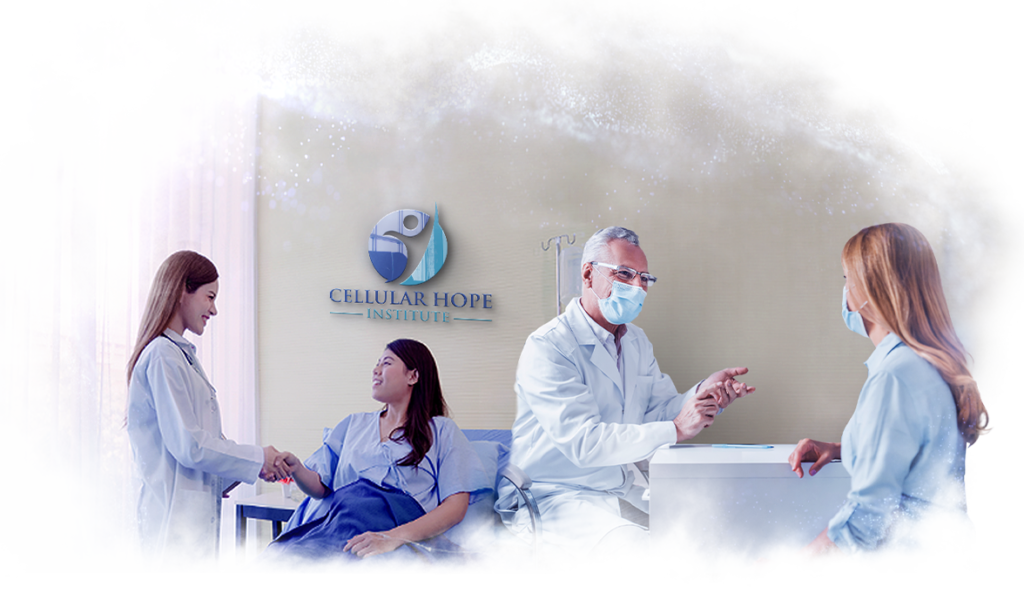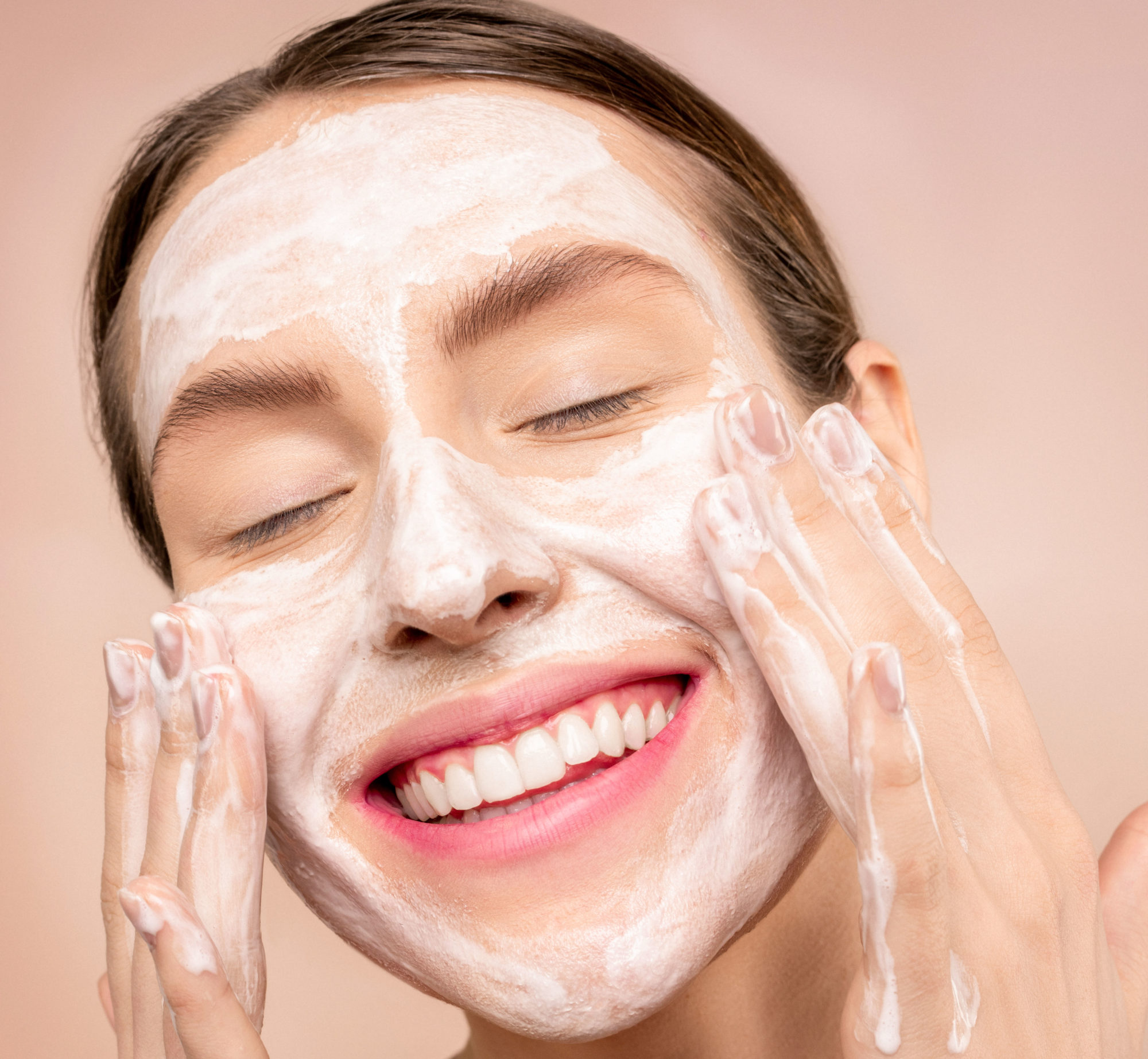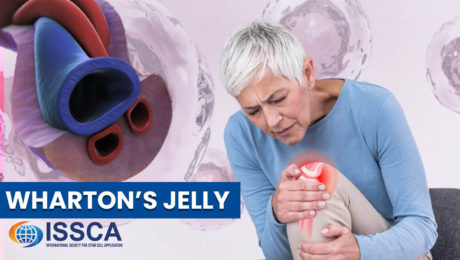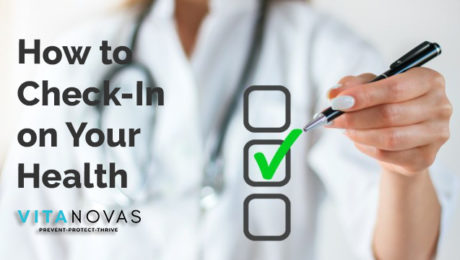Wharton’s Jelly – how does it work?
THURSDAY, 16 SEPTEMBER 2021 / PUBLISHED IN BLOG
What is Wharton’s Jelly?
Wharton’s Jelly is the substance that helps lubricate and support the umbilical cord. What makes Wharton’s Jelly so special is it contains high levels of mesenchymal stem cells. These special stem cells adapt to fit the cells needed to help regenerate damaged tissue and relieve pain naturally.
The Potency of Mesenchymal Stem Cells in Wharton’s Jelly
The mesenchymal stem cells that come from Wharton’s Jelly are among the most potent stem cells, rich in regenerative properties. Wharton’s Jelly also contains a good amount of collagen, hyaluronic acid, and anti-inflammatory properties, making them quintessential in regenerative medicine.
The Role of Regenerative Medicine
Regenerative medicine refers to treatments and medicine that are naturally occurring, including stem cell therapies. Mesenchymal stem cells are harvested from the Wharton Jelly found in the umbilical cord, donated by a healthy mother of a full-term baby. These stem cells contain all the regenerative properties needed to help the body heal and relieve pain naturally.
How Does Wharton’s Jelly Treatment Work?
Mesenchymal stem cells are injected into the body and have the ability to transmute into cells needed to repair damaged tissue and relieve inflammation. These cells harness potent regenerative properties that help rebuild the injured part of the body and provide long-lasting natural pain relief. Unlike pain medicines, which provide temporary relief that masks the symptoms and can be harmful if taken long-term, the stem cells found in Wharton’s Jelly are naturally occurring and natural to the body.
Best Uses for Wharton’s Jelly
Wharton’s Jelly is best used in patients with degenerative diseases and musculoskeletal injuries. The anti-inflammatory and regenerative properties work to repair damaged tissues, leading to lasting pain relief and restored function.
What to Expect from Wharton’s Jelly Treatment
Once a patient and doctor have decided on this type of stem cell treatment, patients can expect a relatively painless process. Stem cells are injected into the site and immediately go to work. Injections are virtually painless, and there are no known negative side effects. Patients can generally get right back to the activities they love. Doctors will discuss treatment plans based on individual needs, and in some cases, resting an injured area for a specific period may be needed.
The Effectiveness of Wharton’s Jelly Therapy
The mesenchymal stem cells found in Wharton’s Jelly have proven to be a very successful therapeutic method to treat several degenerative issues and injuries. This therapy is relatively painless, with no known negative side effects, making it an excellent choice in treatment. Instead of masking the pain with dangerous medicine, stem cell therapy offers a naturally occurring solution that aims to repair the damaged tissue and resolve the problem.
Learn More About Wharton’s Jelly Treatment
If you want to learn more about Wharton’s Jelly Treatment and how you can help your patients, you can check our next training course here: Wharton’s Jelly Training Course.
- Published in Blog
How to Improve Your Immune System to Benefit Your health
MONDAY, 16 AUGUST 2021 / PUBLISHED IN BLOG
The Benefits of Exosome Treatment for Human Health
Recent studies show that exosome treatment could have great benefits for human health. Chief among these benefits is the power to repair damaged tissue, the ability to stimulate the immune system, and its role in sexual health and the treatment of lung conditions. Additionally, it has found great use in antiaging and hair loss treatments around the world. Thus, doctors and patients are discovering the possibility of boosting the immune system through the use of exosomes.
How Do Exosomes Benefit the Immune System?
In a recent article, Beverlie Baquir and Robert EW Hancock commented that stromal Mesenchymal Stem Cells play an important role in regulating the immune system. What’s more, via intracellular communication, these cells modulate the secretion of exosomes, which are related to cells that make up the defense system. In fact, T lymphocytes and dendritic cells can absorb and secrete exosomes.
Many studies have confirmed that exosomes contain an abundant quantity of proteins and RNA, including mRNA and microRNA. This further confirms the capacity of exosomes to fortify the immune system, mainly because microRNA can modulate immune responses. Additionally, several studies indicate that microRNA can control the function of receptor cells, which are associated with cardiovascular disease, cancer, and sepsis.
Exosomes for Hair Loss
For a long time, PRP has been used by physicians around the world for patients presenting with hair loss. Indeed, it is thought that treatment with exosomes could have even more implications for hair loss. Primarily, this is because the exosome product generally has a higher concentration of growth factors when compared to PRP.
Exosome Therapy & Lung Health
Several studies now indicate that exosome therapy can be used for the treatment of pulmonary diseases. This is primarily due to its capacity to stimulate regeneration within tissues, as well as the healing of scar tissue in wounds and damaged areas in the body, aside from its powerful anti-inflammatory properties and ability to boost immune health.
Improve Your Sexual Health with Exosomes
Exosome therapy offers great benefits in sexual health for both women and men. Its application in women can increase sensitivity and lead to better orgasms. At the same time, it could also lower symptoms such as incontinence.
For men, this procedure could stimulate the development of new blood vessels, leading to improved circulation in the penis. As a result, this would allow the patient to maintain his erection for a longer period of time, achieving greater sexual satisfaction.
Learn More About Regenerative Medicine
If you want to start in the field of Regenerative Medicine or improve your knowledge, you can check our courses here: Regenerative Medicine Courses.
- Published in Blog
Reasons to Choose Cellular Therapy in Mexico
TUESDAY, 10 AUGUST 2021 / PUBLISHED IN BLOG
Exosomas Celulas madre Cancun
Reasons to Choose Cellular Therapy in Mexico
What is Cellular Therapy?
Cellular Therapy, also known as regenerative medicine, is a groundbreaking field of medicine today that aims to repair diseased, dysfunctional, or injured tissues using Stem Cells and their derivative products. Stem Cells are the basic building blocks of the human body. Before cells specialize into lung cells, heart cells, or brain cells, they are stem cells. Under the right conditions in vitro or in a lab, stem cells can multiply to form more cells, known as daughter cells, which then become specialized cells in the tissue that is being treated.
Benefits of Cellular Therapy
Regenerative medicine stimulates proper healing processes within the body. Although there are various types of regenerative treatments, therapy using Mesenchymal Stem Cells is the most powerful available to physicians today. Clinical trials have proven that these cells can treat a wide array of medical conditions, especially musculoskeletal conditions. It significantly reduces long treatment times typical of standard care for lesions and other conditions and shortens rehabilitation time from years to months, offering a valuable alternative to expensive joint surgeries.
Stem Cells also have an incredible capacity to combat illness, fortifying the immune system and lowering inflammation common with autoimmune disorders. Due to the immune booster that cellular therapy offers, many clinics provide IV lines for patients looking to use stem cells to stimulate their immune system. This immune system booster can significantly enhance the quality of life for immunocompromised patients.
Cellular Hope Institute Cancun | Cinematic Trailer
The Most Important Properties of Stem Cells
- Their ability to multiply and regenerate themselves
- Their capacity to heal and renew damaged tissues
Cellular Therapy treatments based in Mexico have become revolutionary due to the benefits reported by patients, including reduced inflammation, increased mobility, and the healing of scar tissue. This increase in popularity has led many people to seek quality and affordable cellular therapies.
Why Choose Cellular Therapy in Cancun, Mexico?
Advanced Cellular Cultivation
One of the primary advantages of receiving cellular therapy treatment in Mexico is the ability to cultivate and reproduce cells extracted from patients in a laboratory environment. This means patients can receive a higher concentration of cells, leading to improved results.
Affordable and Comprehensive Treatment
Mexico is an excellent option for more invasive treatments requiring a larger operating team and more medical products. As one of the Western Hemisphere’s largest medical tourism capitals, treatments in Mexico are performed in FDA-compliant hospitals and offered at a more affordable price point. A multiple-day cellular therapy treatment in Mexico is far more affordable than similar treatments in the United States and Canada.
Advantages of Choosing Mexico
- Affordability: Lower cost of treatments compared to the US and Canada.
- Better Cellular Products: Ease of cultivating cells in a laboratory and the ability to use naive cells.
- Legal Status: A wide variety of treatments are legally available.
Cellular Hope Institute
At Cellular Hope Institute, we evaluate, diagnose, and treat patients worldwide with the latest regenerative medicine modalities. We provide an extensive support network to ensure a completely worry-free experience, arranging travel and accompanying patients every step of the way to guarantee a calm, safe, and enjoyable trip to Cancun.

Our Team Will Assist You With:
- Scheduling your treatment dates
- Booking flights
- Hotel reservations (many hotels are a short walk from the hospital)
- Organizing transport during your stay in Cancun, including airport transfers
- Accompanying you to and from the hospital and answering any questions along the way
Our hospital is located in the center of Cancun, in an area known as ‘Stem Cell Circle,’ famous for its clinics and hospitals specializing in regenerative medicine research and treatment.
Our Commitment
We are dedicated to inspiring hope and improving our patients’ well-being by offering effective treatment with careful screening and a professional atmosphere where the patient’s health and happiness are paramount. Our mission is to provide the best possible experience through our committed staff, from patient outreach and coordination to your operating physician. We aim to alleviate your condition using the latest technology and quality care because our patients are our top priority.
Contact Us
Get to know the list of conditions that can be treated at our center by visiting the link below:
Additionally, you can contact us directly through the following email address:
info@cellularhopeinstitute.com
- Published in Blog
Self-Care for Dummies
THURSDAY, 08 OCTOBER 2020 / PUBLISHED IN BLOG
What is Self-Care?
It is, quite frankly, impossible to use the internet in the twenty-first century without hearing much more than you want to about self-care. Most often, it is some sort of internet influencer telling you how important it is to take care of yourself while plugging their sponsored products. However, and many of these people may be remiss to see someone say this, self-care doesn’t require a lot of money in the bank. Indeed, just a few simple lifestyle changes can be all you need to give you a new lease on life. With the world as chaotic as it is right now, it is vital to our mental (and, by extension, physical) health to practice self-care. Below, we’ve given you a rundown on what self-care is and how it is surprisingly important to your overall well-being.

Understanding Self-Care
Put simply, self-care is being good to yourself and doing things that are good for you so that you feel better. Oftentimes, people do not have enough time in the day to consistently make the best choices possible. Other times, stress can get the better of them. It’s at these moments that it is important to take a step back, focus on our wellbeing, and make sure that we are taking care of ourselves. Self-care is not just about doing the things that you enjoy, it’s about doing the right thing. This means avoiding things that are unhealthy, including drugs, alcohol, or even toxic people– it’s caring for yourself like you would a friend in need.
Self-Care and Mental Health
If you feel like you’re far too stressed out, like the entire weight of the world is on your shoulders, and you are unsure of how to live with the burden, can’t focus, and are starting to feel depressed, then it is likely that you are suffering from something known as mental exhaustion. So, how do you get a clearer head? Many people find that exercising is very good for this, as it brings endorphins into the brain and gets the heart pumping. For those who already exercise but have similar problems with stress and mental focus, another option is meditation. Take 30 minutes each day to sit in a quiet room, close your eyes, and just focus on your thoughts while taking deep breaths. Meditation has been in use for thousands of years as a way to relieve some of the mental burdens that weigh us down.

Another thing that you can do is to take a break from social media or the internet. These days, people are bombarded with a constant barrage of information, whether it is advertisements, social media updates, news reports, or app notifications. There’s way too much information out there, and our brains can’t handle it constantly. Reading a book before going to sleep is a great way to decompress– we all love TV, but books can stimulate our brains while allowing us to take it easy. If you are feeling overwhelmed, give your brain a break from the constant noise and stimulus– mental health is important and not something that should be taken for granted.
Self-Care and Physical Health
Taking care of your body is one of the cornerstones of self-care. If you are in good shape physically and regularly exercise, it is very likely that your mind and spirit will be in as good a shape as your body. Living clean and caring for your physical health means cutting out fast food and junk foods, which are high in salt and sugar. These highly-processed products can mess with the brain and increase blood pressure, which can make you feel more anxious and stressed. This is not even to mention the long-term effects hypertension can have on the health of your heart. When we are stressed, we gravitate towards the comfort foods that make us feel comfortable in the short term, those highly-processed, fatty foods that can wreak havoc on our bodies in the long term. After all, there was no such thing as a bag of chips in the Paleolithic era, and in terms of the processes of evolution, the human body has not progressed far from cavemen. Put simply, humans were never meant to eat potato chips and hamburgers– that doesn’t mean you can’t, of course, but it means that you should eat these foods in moderation.
It is important to eat healthy foods such as vegetables, nuts, fruits, whole grains, and lean meats. For the body, self-care also means exercise. You need to work out at least 45 minutes a day, 3-4 times a week. This will trigger the endorphins in your body, which help you to feel good and relax. Exercise is a great stress reliever, and it doesn’t need to be exclusively dumbbells, barbells, or other machines for heavy lifting. If you miss the gym days, however, I recommend combining IV drips with your routines to enhance both your performance and recovery.

Going for a walk outside among nature can also help with your mental health. You can also practice yoga, which emphasizes a balance between the three parts that exist within humans– the mind, the spirit, and the body. There are many great fitness routines and activities that you can choose from to help give your body the care that it needs.
Self-Care for the Soul
Emotional health is important as well. We often take for granted the emotions that we feel and, even more often, are unable to express them in ways that are healthy for us. Journaling is a good way to get in touch with what you are feeling. Expressing your thoughts and feelings on paper can give you some perspective on the situation and help untangle what might feel like an impregnable wall of thoughts. Painting or drawing can also be a good release for your emotions, as is listening to music or, if you play an instrument, playing it yourself.

Reaching out to friends and family just to talk can also release some of the feelings you may have bottled up after weeks or months of not properly expressing them. If things are bad, you can also find a good therapist to assist you in talking about your problems. They can give you some strategies to change your thinking and feel better– whatever you decide, make sure not to bottle up your feelings, because eventually, they will spill out. And this hardly ever ends well.
Other Self-Care Tips
Besides what we’ve mentioned above, we’ve created another blog post that contains more medically-oriented health tips for making sure that your body is operating properly. One important thing that you should do is to make sure that you are getting plenty of rest. A good night’s sleep is crucial, and most people require anywhere from 6-8 hours of sleep a night, but it varies from person to person, and some people might need more. Also, make sure that you are taking care of your hygiene as well. A long shower or bath could be just what you need to melt the stress of the day’s work away and leave you feeling refreshed and renewed. Make sure to avoid alcohol or drugs when dealing with stress, however– they will only make the problem worse. You can also drink herbal teas to help you relax and fortify your immune system, which has been found to be weaker when the body is stressed.
Really, you just need to remember to be good to yourself– treat yourself like a friend, and be kind. We are often our own worst enemies, and while this is mostly used in professional and social settings, it is also true when caring for yourself. After all, it is you who allows yourself to indulge in your worst impulses. Try to focus on your best impulses and take care of yourself when you need it, and you’ll feel the difference.
- Published in Blog
Healthy Skin and You: How to Subtract Years from Your Face
THURSDAY, 08 OCTOBER 2020 / PUBLISHED IN BLOG
The Reality of Aging Skin
Those who are younger and have never had to face any of the effects of aging firsthand often have a naive view of getting older– that they will age like fine wine. But in reality, the human body ages more like fine milk. This is because, well, we are alive! As the years take their toll, many people find that skin is one of the places that suffers the most as youthful vigor fades away into middle age. Having healthy skin takes a bit of work, and with the wide variety of anti-aging products, treatments, and nutrients that are available both over the counter and through clinical consultations, learning how to take care of your skin can seem like a daunting task. That’s why we’re here to help! All you need to do is keep a few basic things in mind, and you’ll be on the fast track to younger-looking, healthier skin.
Moisturized Skin is Happy Skin
This might be the simplest tip that there is, and it is really the foundation for healthy skin: moisturizing! You must have heard it before, from any variety of sources, and if you haven’t– well, consider this your wakeup call. The skin is the largest organ in the human body, and it is one of the only outwardly-facing ones that there are– because of this, the skin is one of the organs that is most susceptible to damage, and you can think of moisturizer as a shield that can protect and preserve the quality of your skin.
The main use of moisturizers, in a medical sense, is to protect the skin from environmental exposure. This environmental exposure can be present in many ways, from the Sun’s UV rays to hot showers to exceedingly cold air– what do these things all have in common? They wear the skin down by causing it to dry out, causing cracks and wrinkles. When we apply moisturizer, it helps to hold water onto the surface of the skin and draws water deeper into its layers. Hydrated skin looks younger, fuller, and often more wrinkle-free, but there’s more! The right moisturizer will also serve to help the skin in repairing itself (this is often because it is fortified with certain vitamins) and can also stimulate blood circulation, which is another way to ensure that your skin looks healthy.
Next time you’re shopping for moisturizer, take a look at the ingredients on the back of the label before you apply them to your face. The best anti-aging moisturizers contain vitamins A, B5, C, or E, but it is also important to find a moisturizer that includes SPF, especially if you live in sunnier climates.

Water, The Liver, & The Skin — A Skincare Cycle
In addition to hydrating the surface of your skin, it is important to hydrate the whole body! Staying hydrated is very important for healthy skin, and, by extension, so is the health of your liver. It is safe to say that having a healthy liver means that your skin will be similarly healthy.
Everything that we eat and drink, whether it is water or rice and beans, is processed in our livers. The liver is the greatest asset the body has to detox it, and it can at times be useful to consider it to be the garbage disposal of the body. After all the nutrients have been used, the liver disposes of the leftovers– and when the liver is dehydrated, it has been found to be significantly less effective in flushing out waste (lack of hydration impacting performance is a trend that can actually be seen all throughout the organs and systems of the human body). When the liver is not working at one-hundred percent, the body often decides to use different routes for detoxification, and one of the first ones is the skin. When the liver isn’t functioning well, people are more likely to experience skin irritation and blemishes like acne.
Stress and Cortisol Management
There’s a decent chance you didn’t expect stress to be on this list. It’s true that when I began researching this topic, I was a bit dubious about stress’ major impact on skin health, but there is no way to refute evidence– and keeping your stress in check has been found to be just as important as moisturizing.
It’s been found to be true that some people break out with rashes or acne when they are stressed. What’s more, people that have rosacea or eczema might find that their condition flares up when they are feeling stressed out. The reality is that there are a number of factors that contribute to this unfortunate correlation. Firstly, stress causes the body to release more cortisol (commonly known as the ‘stress hormone’), which makes the skin oily, clogs the pores, and causes breakouts. The next is that stress can also negatively affect the proteins in the skin, making it harder to retain water and elasticity. Dry skin that is not elastic has a higher chance of developing cracks or wrinkles, and– even worse, perhaps, stress has been found to interrupt a good night’s sleep, which leads to bags under the eyes and often a terrible feeling of sluggishness.
So, how can we reduce stress? That’s largely easier said than done, as many people certainly already know. There are, however, a few things that you can do that might help to wind you down:
- Exercising
- Practicing Self-Care
- Enjoying Relaxing Hobbies
- Connecting with Friends and Family
- Meditating
- Expressing your Feelings
- Speaking to a Therapist
Nutrition and the Skin
People often say that you are what you eat, but that is not entirely accurate. It’s probably a bit more accurate to simply say that you are as healthy as the food that you put into your body– this means that if all you are putting into your body is over-processed food with little to no real nutritional value, your skin (and energy, and immune system, and digestive system– everything, really), is going to take a major hit.
One of the most important things that you need to consider specifically for skin health is the presence of antioxidants in the food that you eat. Antioxidants help fight off the damage that is caused by free radicals that harm the skin cells, making them one of the most powerful anti-aging tools available. Vitamin C, E, and A are rich in antioxidants and are found in food like strawberries, oranges, nuts, spinach, broccoli, fish, and dairy products. When possible, try to go organic, and we also recommend including a nutrient-rich vitamin IV drip into your routine– it is one of the least invasive ways to ensure that your body has an overabundance of the building blocks it needs to function well.
Similarly, bad nutrition leads to bad skin. Refined carbs like white bread, pastries, candy, and corn syrup, cause glycation, a major factor in premature aging.
The Importance of Humidity
We talked plenty about moisturizers, but there is another important tool that you can use to keep your skin hydrated and healthy, especially if you live in colder climates. It is known as a humidifier– when most people think of one, they get the association with being sick, and this is for good reason. After all, humidifiers are one of the most tried and true methods for reducing sinus inflammation, but they also have a positive effect on the skin.
Dry air strips the skin of oils and makes it easier for our faces to get irritated. Putting a humidifier in the areas of your home that you use the most is a simple, but effective, way of keeping your skin looking happy and healthy.
In Conclusion
When we treat ourselves well, our body rewards us with younger, healthier-looking skin. Looking for more ways to rejuvenate your skin? Check out our facial care services to give yourself a youthful glow.
- Published in Blog
How to Check-In on Your Health
Many people say that health is wealth – and this is because, really, many people do not know how important and crucial their health is until a certain part of their body is suffering – at which point they realize that they took their health for granted. However, just like checking your bank statements to verify where your money is being spent, there are several easy ways that you can keep an eye on your health yourself. If you are really concerned, and there might be something seriously wrong with you, a visit to a hospital or clinic might be necessary, but otherwise, there are a few things that you can do right at home if all you need is a simple check. In fact, you’d be surprised at just what you can find out about yourself with just a few simple tests.
Check Your Temperature
One of the easiest ways to simply check on your general health is to take your own temperature. All you need is a digital thermometer, which can be found at nearly any pharmacy, and place it under your tongue for a few moments until it beeps to get a reading. From there, you have an accurate gauge at how ‘hard’ your body is working – the higher the body temperature, the more energy that the body is using.
Blood Pressure
If someone was to ask you what your blood pressure was today, would you be able to even give them a ballpark estimate? While many people do not know exactly what it is, even fewer recognize just how important this metric of bodily function is. High blood pressure, also medically known as hypertension, is one of the leading causes of heart disease – it can be caused from eating lots of salty foods, smoking, or drinking. Additionally, it can also depend on a variety of other internal factors including age, race, family history, and your amount of exercise.
Checking Your Pulse
Checking your pulse, or heart rate, is a simple test that doesn’t require any special equipment. In fact, it is something that people have been doing much the same way for centuries! It is very important to know your resting heart rate, as those with a higher average resting heart rate tend to be more at risk for heart disease than those with a lower heart rate (this is simply because the heart works more), and heart disease remains the leading cause of death in the United States of America.
How to Measure Your Waist
All you need for this is a tape measure, or to look at your pants size. The size of your waist is positively correlated with your weight. To measure it with a tape measure (as, depending on the fit of your pants, it may be the most accurate measure) all you need to do is take the end of the tape measure and bring it around your waist. Tighten it, and you should be able to measure the circumference of the waist. Healthy men are expected to have a waste smaller than 40 in, while women should have a waist lower than 35.
Check for Lumps
This is extremely important, and should be done regularly throughout your life. If you are a woman, you should be regularly checking your breasts for any lumps. This should be done in front of a mirror, as it can often provide a better view. To do this, all you need to do is work your way from the armpits to the nipple and check for any bruises, lumps, or discoloration – in short, anything that looks like it might not belong there. It can be done in as little as five minutes, but it is extremely important and one of the cornerstones to good health. If you find anything that is unusual, the earlier you catch it before it becomes a problem, the better. If you are a man, it is important to examine the testicles in a similar way. Feel around the sack and put a little pressure on the testes to feel for anything unusual. It may feel awkward, but it is far better to be safe than sorry with such a thing.

How Skin Plays into Health
The sun is something that everyone experiences every single day – at least, we should hope so, but this is not always a good thing. It’s warm, comforting rays can actually make human beings more susceptible to skin cancer. It’s important to put sunscreen on, at least 50 SPF before leaving the house every day. If you want to check your skin at home, you can, but there’s a few simple things that you have to keep in mind. Stand Stand in front of a mirror and examine every part of your body. You might want to have someone there to help you in examining your back – you want to look for warning signs that are known as the “ABCDE” Signs.
A is for asymmetrical shape, B is for irregular borders, C is for abnormal color, D is for diameter, and E is for evolving. If a mole is larger than a pencil in diameter, has a weird color, is not an even circle, or changes appearance over time, you should head over to a dermatologist as soon as possible.
Conclusion
These are just a few of the things that you can do at home to check up on your health. It is important to check your health regularly so that you can catch any strange developments early on – Invest in some equipment like thermometers and blood pressure monitors – they don’t have to break the bank, but they do have to be accurate. This is one way that you can keep an eye on your health, to hopefully catch any problems you might have before it’s too late to do so.
- Published in Blog
Can Stem Cells treatment Regrow the knee cartilage?
Some people believe that stem cells can achieve this, but studies show it’s unlikely in most cases. While minimal growth may be observed a year after treatment, full cartilage replacement is rare.
Limited Regenerative Capacity of Cartilage
Cartilage has limited regenerative capacity, and current pharmacological treatments offer only symptomatic relief. Patients who don’t respond to conventional therapies may undergo surgical procedures like arthroplasty or total joint replacement.
Stem Cells for Cartilage Repair
Stem cells from various tissues have been used over the last two decades to treat osteoarthritis and bone damage. They primarily aid in cartilage repair but often fail to fully replicate native tissue properties.
Potential of Stem Cell Therapies
Stem cell therapies using MSCs or iPSCs have shown promise in clinical settings. iPSCs, in particular, offer patient-specific regeneration potential.
Understanding Cartilage and Its Damage
Cartilage is crucial for joint function, providing cushioning and flexibility. Damage, whether from trauma or conditions like osteoarthritis, reduces its effectiveness.
Treatment Options for Cartilage Damage
Current treatments focus on symptom relief or joint replacement for severe cases.
How Stem Cells Can Help
Stem cells, sourced from bone marrow or fat, can develop into chondrocytes and aid in reducing inflammation and stimulating repair.
Challenges in Cartilage Regrowth
Cartilage’s complex structure requires more than just cell injection for effective regeneration. Scaffold-like structures are being researched for better outcomes.
Mechanism of Stem Cell Action
Stem cells work through anti-inflammatory processes and regeneration stimulation, though they do not transform into different tissues.
Role of ISSCA in Advancing Regenerative Medicine
The ISSCA promotes standards and research in regenerative medicine, offering certifications and advancing the field’s understanding.
- Published in Blog
Knee replacement alternatives
Knee replacement, also known as knee arthroplasty, involves replacing a knee joint with a prosthetic device. Explore the alternatives to this procedure and their benefits.
Why Consider Knee Replacement Alternatives?
Many patients seek alternatives due to persistent pain and potential risks associated with knee replacement surgery.
Challenges of Knee Replacement
Patients often experience continued pain post-surgery, with studies showing significant discomfort even years later.
Common Risks of Knee Replacement
Understand the risks involved, including increased susceptibility to cardiovascular events and allergic reactions to prosthetic materials.
Types of Knee Replacement Alternatives
Discover effective alternatives that offer relief without the complexities of surgery.
Steroid Injections
While providing short-term relief, steroid injections may not offer long-term solutions due to their impact on cartilage.
Viscosupplementation
Gel-like substances such as hyaluronic acid injections offer relief for knee arthritis, though effectiveness may vary over multiple doses.
Knee Nerve Ablation
A promising procedure that involves disabling nerves around the knee joint to alleviate pain, though long-term outcomes are still under study.
Orthobiologics
Utilizing natural substances like PRP and BMC to promote healing and reduce degradation of knee tissues, offering both autologous and allogeneic options.
Platelet Rich Plasma (PRP)
Derived from the patient’s blood, PRP injections foster cartilage repair and reduce inflammation, beneficial for moderate knee arthritis.
Percutaneous Knee Arthroplasty (PKA)
A sophisticated procedure involving precise injections of bone marrow concentrates guided by ultrasound, effective even in severe cases of knee arthritis.
- Published in Blog
What Are The Best Options For Managing Chronic Pain?
Chronic pain is a debilitating condition affecting millions worldwide. Explore effective strategies and treatments to alleviate persistent discomfort.
Understanding Chronic Pain Causes
Learn about the underlying factors contributing to chronic pain, from inflammation triggered by injuries to environmental and physiological influences.
Common Chronic Pain Conditions
Discover prevalent conditions like osteoarthritis, migraine, multiple sclerosis, neuropathy, and fibromyalgia, each posing unique challenges and symptoms.
Impact of Chronic Pain
Understand the profound impact of chronic pain on daily life, including physical limitations, emotional distress, and the risk of opioid dependency.
Management Strategies for Chronic Pain
Explore various treatment approaches recommended by healthcare professionals to manage chronic pain effectively.
Analgesics
Overview of commonly used pain relievers such as NSAIDs, acetaminophen, and aspirin, along with considerations for long-term use and potential side effects.
Anticonvulsants
Explore how anticonvulsant medications like Gabapentin and Lyrica are repurposed to manage chronic pain, highlighting their effectiveness and side effects.
Antidepressants
Learn about the role of antidepressants in treating chronic pain, including tricyclics and SNRIs, and their dual impact on pain relief and mood stabilization.
Opioids
Discussion on the use of opioids for severe chronic pain, emphasizing careful management due to addiction risks and monitoring protocols.
Alternative Medicine
Explore natural remedies and alternative therapies like herbal treatments and cannabinoids, gaining popularity as complementary approaches to pain management.
Could Stem Cell Regeneration (SCR) Be the Solution?
Investigate the potential of stem cell therapy in chronic pain management, including types of stem cell treatments, their benefits, and current research insights.
Types of Stem Cell Therapy
Differentiate between autologous and non-autologous stem cell therapies, highlighting their sources, applications, and potential outcomes.
Research and Effectiveness
Review current studies and findings on mesenchymal stem cell (MSC) therapy, assessing its efficacy in treating conditions like osteoarthritis and neuropathic pain.
Considerations and Risks
Understand the risks associated with stem cell therapy, including tumor formation and immune reactions, balanced against its promising results in pain reduction.
- Published in Blog
MESENCHYMAL STEM CELLS
Over the past decade, cellular therapy has rapidly advanced in both preclinical and clinical settings. Mesenchymal stem cells (MSCs) have garnered significant interest in regenerative medicine due to their unique biological properties.
Characteristics of Mesenchymal Stem Cells
Mesenchymal stem cells are multipotent stromal cells capable of differentiating into various cell types, including osteoblasts, chondrocytes, myocytes, and adipocytes. They play crucial roles in tissue repair, wound healing, and cell substitution.
Sources of Mesenchymal Stem Cells
Initially isolated from bone marrow, MSCs can now be sourced from various tissues such as adipose tissue, dental pulp, umbilical cord, and placenta. Each source offers unique advantages in terms of accessibility and therapeutic potential.
History and Development
The concept of MSCs dates back to the late 19th century with Cohnheim’s hypothesis on fibroblastic cells in wound healing. Alexander Friedenstein’s work in the 1970s further characterized MSCs, demonstrating their colony-forming ability and osteogenic differentiation potential.
Clinical Applications
MSCs have been extensively studied and applied in treating immune-based disorders like rheumatoid arthritis and diabetes, as well as orthopedic conditions such as osteoarthritis and spinal cord injuries. Their immunomodulatory properties make them promising candidates for gene therapy and insulin production.
Current Research and Future Directions
Ongoing research focuses on enhancing MSC therapy efficacy, addressing challenges like tumor formation and immune reactions. Advancements in culturing techniques and understanding MSC behavior in vivo are critical for expanding their clinical applications.
Conclusion
Mesenchymal stem cells represent a pivotal frontier in regenerative medicine, offering new avenues for treating chronic diseases and injuries. Continued research is essential to fully harness their therapeutic potential.
REFERENCES
- Wei X, Yang X, Han ZP, Qu FF, Shao L, Shi YF. Mesenchymal stem cells: a new trend for cell therapy. Acta Pharmacol Sin. 2013 Jun; 34(6):747-54
- Friedenstein AJ, Piatetzky II S, Petrakova KV. Osteogenesis in transplants of bone marrow cells. J Embryol Exp Morphol. 1966;16:381–90
- Friedenstein AJ, Chailakhyan RK, Latsinik NV, Panasyuk AF, Keiliss-Borok IV. Stromal cells responsible for transferring the microenvironment of the hemopoietic tissues. Cloning in vitro and retransplantation in vivo. Transplantation. 1974;17:331–40.
- Pittenger MF, Mackay AM, Beck SC, Jaiswal RK, Douglas R, Mosca JD, et al. Multilineage potential of adult human mesenchymal stem cells. Science. 1999;284:143–7.
- Caplan AI, Dennis JE. Mesenchymal stem cells as trophic mediators. J Cell Biochem. 2006;98:1076–84.
- Wang S, Qu X, Zhao RC. Clinical applications of mesenchymal stem cells. Journal ofHematology & Oncology. Apr 30, 2012;5:19.
- Dominici, M., Le Blanc, K., Mueller, I., Slaper-Cortenbach, I., Marini, F., Krause, D., Deans, R., Keating, A., Prockop, D. and Horwitz, E. (2006) Minimal criteria for defining multipotent mesenchymal stromal cells. The International Society for Cellular. Therapy position statement. Cytotherapy 8, 315–31.
- Published in Blog








![CartilageA[1]](https://www.issca.us/wp-content/uploads/2020/08/CartilageA1-460x260_c.jpg)
![services-knee-replacement[1]](https://www.issca.us/wp-content/uploads/2020/08/services-knee-replacement1-460x260_c.jpg)


